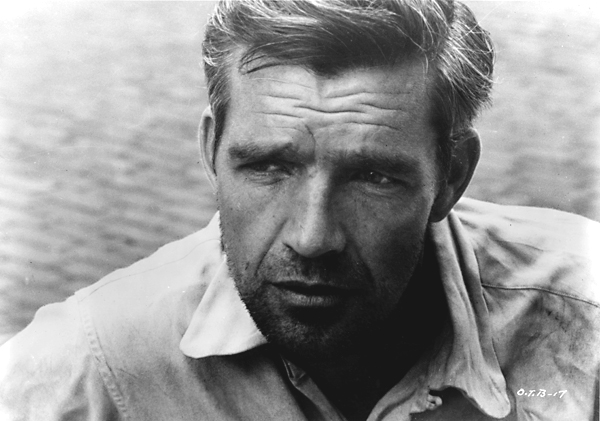|
Reviews of Recent Independent, Foreign, & Documentary Films in Theaters and DVD/Home Video

ON THE BOWERY (1957)
On the Bowery pans the gritty neighborhood in summer’s heat, just before the dark, noisy Third Avenue Elevated train was dismantled, to gradually focus on three men over three days, each portraying a version of himself, improvising dialogue redolent with period and local slang. New to town, Ray (Ray Salyer) is younger and healthier than many of the others, and better dressed. Looking around for familiar faces from his days working on the railroad, he treats the older, garrulous raconteur Gorman (Gorman Hendricks) to rounds of his favorite drink, and Gorman, in turn, shows him the ropes. The life of a day laborer then looks a lot like the shape-ups illegal immigrants face today, but the truck unloading takes place in the now-gentrified meatpacking district and just down Houston Street from the Film Forum, where this beautiful black-and-white restoration (by the Cineteca del Comune di Bologna) is premiering. As both men start sinking into a boozy haze, they encounter Frank (Frank Matthews), who recounts his experiences in and out of the drunk tank and scrounges around the Bowery to find anything worth selling. This unstinting view of the ravages of alcoholism goes beyond the fiction of Billy Wilder’s The Lost Weekend (1945) and Blake Edwards’ Days of Wine and Roses (1962), especially in showing a whole community catering to alcoholics. There’s the bars serving cheap booze, the pawn shops (and Gorman has no compunction stealing Ray’s battered suitcase), sidewalks littered with people sleeping off binges, infested flop-houses, and the dingy single-room-occupancy hotels that were only a step up. The glimpses of the few women on the Bowery are especially heart-rending for their vulnerability; the crowded Bowery Mission, with its clean sheets and hot meals in exchange for religious exhortations to stay sober, is available only to a long line of men. (My first college internship was working with a housing agency trying to figure out how to help the elderly remnants of this population, with all their frustratingly multiple problems.) While there’s a climactic, celebratory saloon scene where the Bowery residents relish spending their day’s earnings in a more and more boisterous bacchanal, the many montages of drunken and hung-over faces, particularly at the end, poignantly bear evidence of their hard lives. Selected for the National Film Registry of the Library of Congress in 2008, On the Bowery would probably not now be considered a documentary, though it garnered an Oscar nomination in that category. It was made in the spirit of filmmakers who inspired Rogosin—how Robert Flaherty combined fiction and anthropology in such early films as Nanook of the North (1922) and the Italian neorealist Roberto Rossellini incorporated the local fishermen and setting into Stromboli (1950). This blurring of categories for the essence of realism was similarly employed several years later by Kent Mackenzie in the recently restored The Exiles about Native Americans in Los Angeles that Milestone Films distributed two years ago. Watching the film raises a host of “How’d they do that?” questions—as to the filmmakers’ relationship with the cast, what is vérité, and what is staged or reconstructed. Many of the answers are in the accompanying new documentary The Perfect Team: The Making of On the Bowery, directed by Lionel Rogosin’s son, Michael. In addition to providing background on the history of the Bowery and sociological context, there are insightful interviews with his late father, colleagues, and family members of the filmmakers, including renowned historian Gerda Lerner, the widow of Bowery’s editor Carl Lerner. Lionel Rogosin stresses how the horrors of World War II shaped his determination to engage in social cinema, focusing on living conditions just a few blocks from where he and other artists lived in the West Village (and drank heavily in slightly more upscale bars). European film historians note that On the Bowery was even more influential overseas, where it became a Cold War tool to either criticize the U.S. or tout the American freedom to criticize, depending on point of view. Also included are clips from the cast’s appearances on TV shows, where Ray Salyer, looking every inch the potential Gary Cooper-esque movie star, articulately describes the working men of the Bowery, even while he stubbornly defends his right to be an alcoholic. Rogosin’s dedication of the film to Gorman Hendricks is put in sharp relief with the revelation that while he acceded to the filmmakers’ demands to stay mostly sober during the four-month shoot, he went on a bender right afterward that killed him. With its vivid portrayal
of addiction and of a society uninterested in its damaged
war veterans and older manual laborers who can’t adapt to changing work
requirements, On the Bowery is soberly contemporary.
Nora Lee Mandel
|

